Knight and Bishop Checkmate
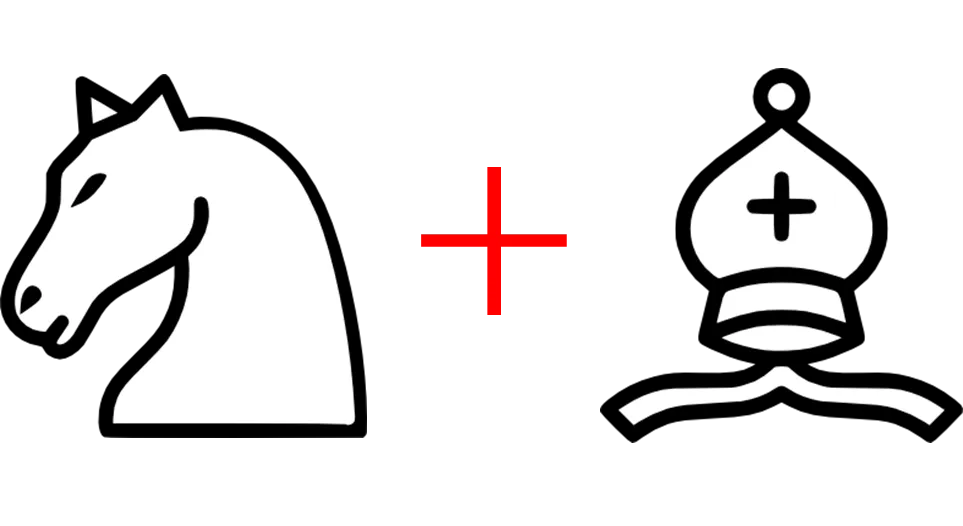
Today I will discuss the Knight + Bishop endgame checkmate.
This endgame was well analyzed by Philidor a long time ago, in 1749.
It is not the most common mate you will see, it occurs once every 5000 games, but it is definitely important to know how to use the Knight and a Bishop together.
I have seen many guides that are trying to explain how to actually checkmate a lone King with Knight and Bishop, but they’re very often failing to teach.
They show moves, give some explanation and it even seems like you understand how to do it yourself at first, but… when trying to do it, it just doesn’t work.
The problem is that there is no exact guide for this mate available; at least I wasn’t able to find it. This is the main reason why I’m writing and you’re (hopefully) reading this. I will systematically present the well-known information and form an algorithm, on how to do it.
I promise, you will be able to deliver this complex Knight and Bishop Checkmate to a lone King after you read and understand this. You ask why is it complex? Well, even grandmasters fail to do it in fifty moves, sometimes. But you will!
Below is the endgame I played against Chessmaster GM edition (2800+ ELO) program. If you can checkmate the Machine in this endgame, I will do the same against human opponents as well.
Idea # 1
The only way to checkmate an opponent’s King is to force him to the right corner, the corner which matches the color of your bishop. Therefore, if you have the light square Bishop you need to force him to a8 or h1, which are light corners.
Idea #2
The safest place for the lone King to be is the opposite color corner, so the main difficulty is to force him out of the wrong corner and escort to the right one.
Idea #3
Here we go. Let’s checkmate this 2800 rated program in Knight and Bishop endgame. The first objective is to force an opponent’s King to the wrong square.
Idea #4

We divide the chess board onto three Triangles: Large Triangle, Medium Triangle and Small Triangle. These are represented in green, blue and red. On the diagram black’s King is inside the Large Triangle. As you already know the only way to checkmate the King is to force him into the light square a8 (or h8) if we have the light square Bishop. We move the opponent’s King from the Large Triangle to Medium and then to Small one, where checkmate will be delivered. See how in the game above.
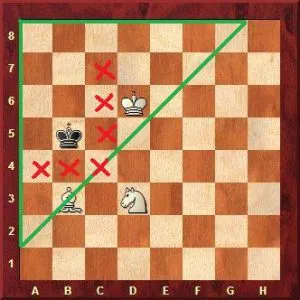
It is the Large Triangle in action. Black’s King cannot escape and only limited by 8 squares he can move at. Bishop is placed at its ideal square. Ideal square is on the diagonal (side of the Triangle), one square up: b3 or f7. The Knight is positioned on the ideal square also. The ideal square for the Knight is d3, it should be on the same row as the Bishop but one square apart.
Why are these ideal squares? When Bishop and Knight are placed in its ideal way they form a wall, preventing the black’s King from breaking through.
Red X’s show the squares controlled by white.
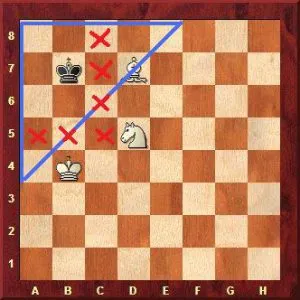
We have moved black’s King to the Medium Triangle. The basic idea here it that the Bishop is at its new ideal square c7, which is on the side of the Triangle, one square away from the edge of the board. The Knight is also at its new ideal square d5, on the same column/row as the Bishop, but one square apart. White King pushes the opponent’s King from the bottom towards the Small Triangle. Black King is only limited by 6 squares.
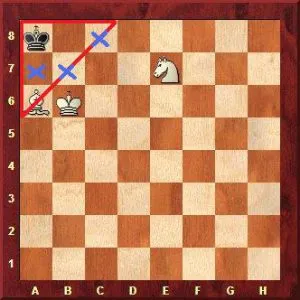
Our job is almost done here. Black’s King is now at Small Triangle and is locked to only 2 squares. There is a checkmate in 2 at this position. But be careful, there is still a chance for a Draw here, don’t let the win slip and make each move with a check from now on.
I hope my analysis was any use for you and you have learned how to checkmate the lone King with a Knight and Bishop. I recommend practicing delivering that checkmate against the computer. You will build confidence and never forget how to do it, after you checkmate Chessmaster, Rybka or Fritz multiple times. Just start up with random position and try to force the opponent’s King to the right corner applying guidelines given above.
You may want to look through the game a few times and read the comments and the “ideas” in order to get the algorithm. But hey, it works and we did it. Let me know about your progress in the comments field.
If you’re interested in the endgames I suggest to check out Famous Queen vs. Rook Endgame and to improve your endgame.



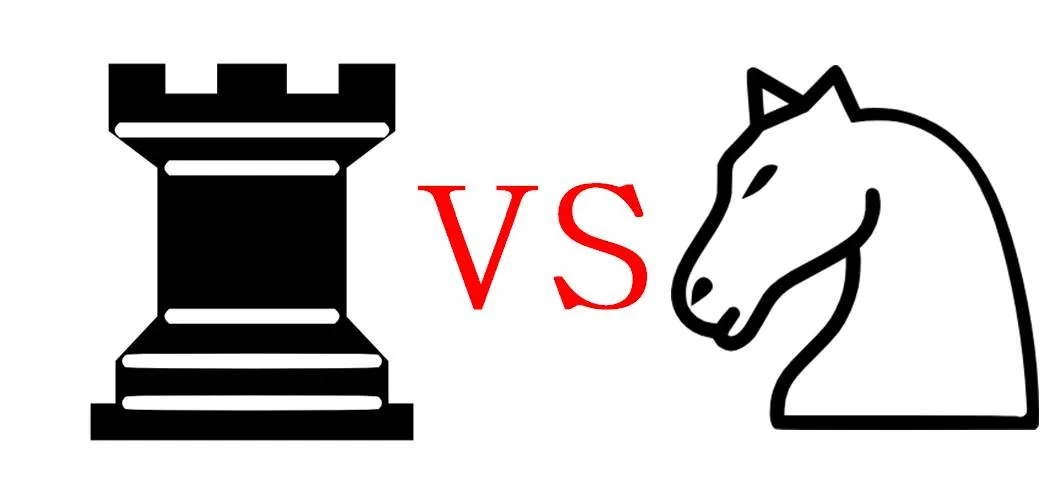
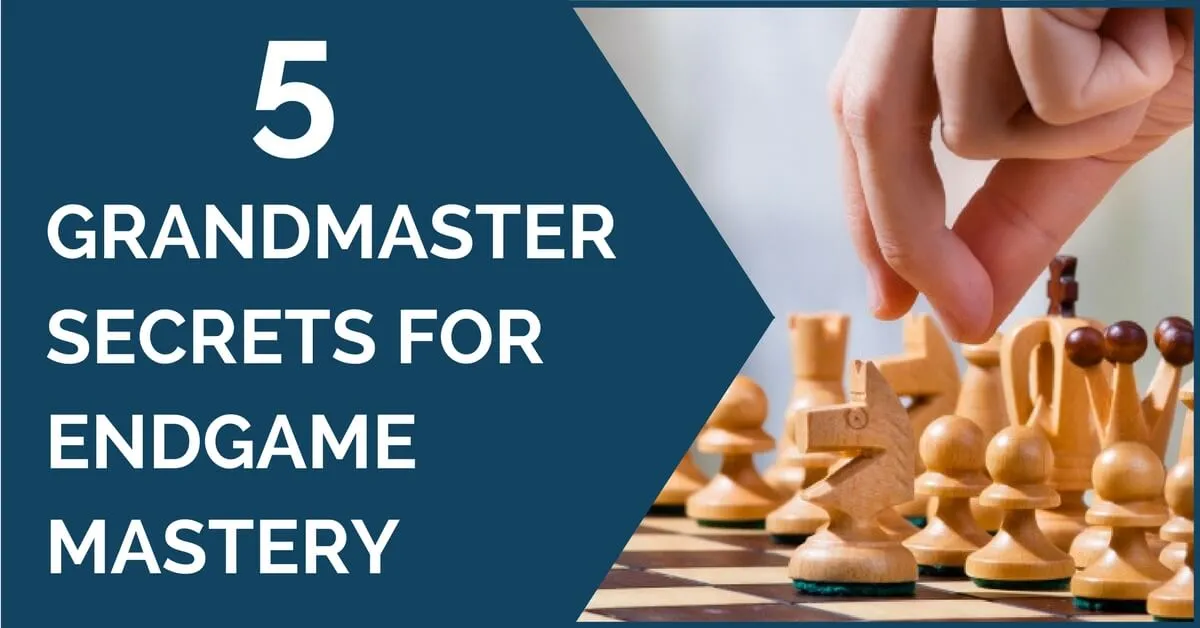
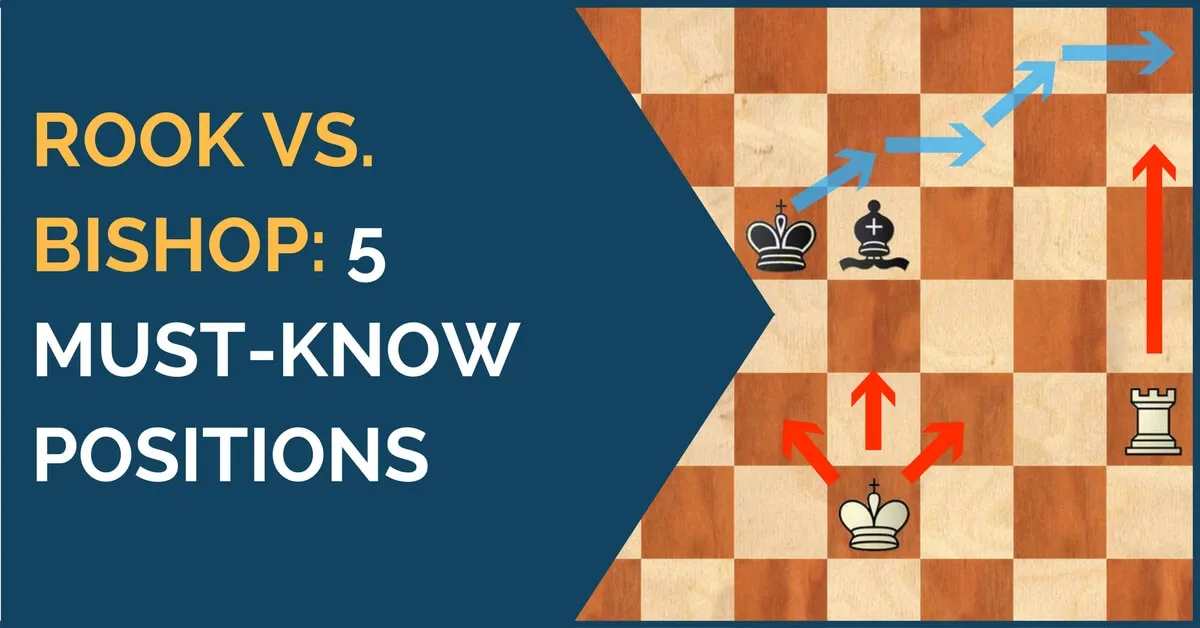




Comments: